
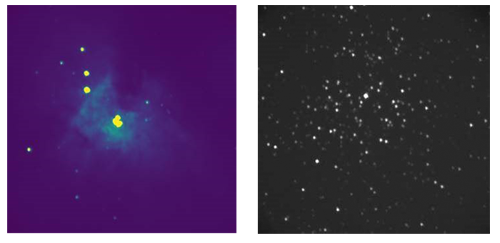 |
The KURO features a back-illuminated sensor architecture just like that of the most sensitive CCD detectors available. The back-illuminated technology utilized by the KURO allows this next-generation sCMOS camera system to deliver >95% quantum efficiency (QE) and 100% fill factor. | 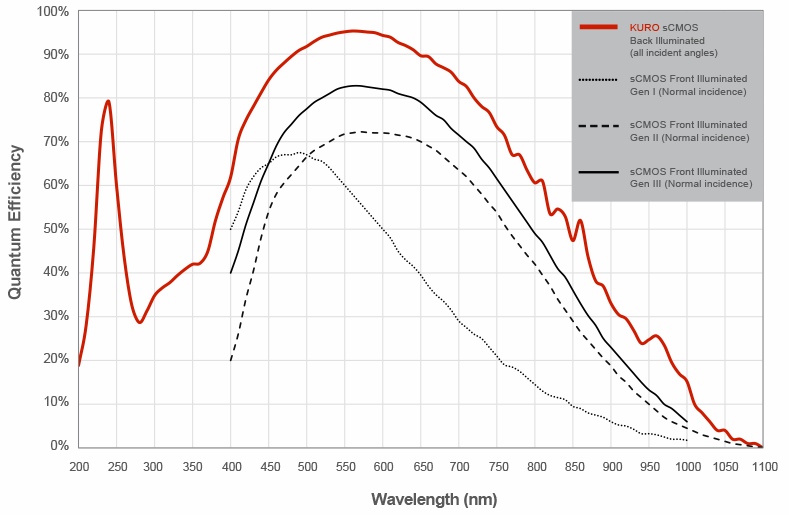 |
The KURO uses the latest sCMOS fabrication technology along with optimized electronics. As a result, it has a significantly better noise profile than any previous-generation, front-illuminated sCMOS camera. | 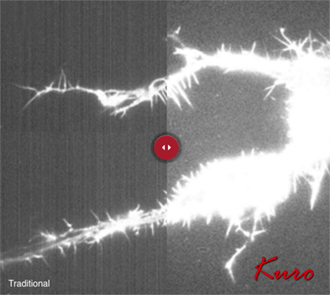 |
无需微透镜阵列Unlike front-illuminated sCMOS cameras, which claim ~80% peak QE, the KURO does not use microlenses to recapture light from the masked area of the pixel. Microlenses significantly degrade QE when light is incident at any angle other than normal to the sensor surface. | 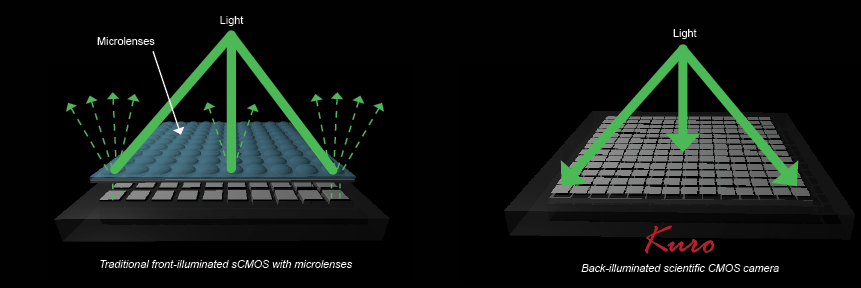 |
高帧频、低读出噪声The KURO offers very high frame rates, up to 41 fps (16 bit) or 82 fps (12 bit) at full 1200 x 1200 resolution with an exceptionally low 1.3 e- rms (median) read noise. The camera is capable of delivering hundreds of frames per second with reduced resolution. | 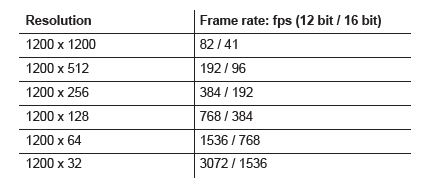 |
The 11 µm2 pixel pitch of the KURO sensor captures 2.8x more photons than previous-generation sCMOS sensors. Each pixel can also handle a large full well of 80,000 electrons, allowing excellent dynamic range (61,500:1 or 95 dB). | 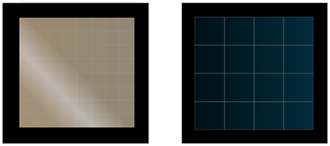 |
Scientists and engineers should carefully consider which sensor technology is best suited to their application. In general, for imaging or spectroscopy applications that require extended integration times (seconds to hours), CCD or EMCCD cameras are still preferred. This is also true for spectroscopy applications that require on-chip binning. Meanwhile, for time-resolved applications that require ultrafast gating, intensified cameras (ICCD or emICCD) are the best choice. Back-illuminated sCMOS cameras provide the sensitivity and frame rates needed for all other applications with relatively short integration times (less than 10 seconds). Table 3 summarizes several key features of these sensor technologies and offers some general recommendations for different applications. | 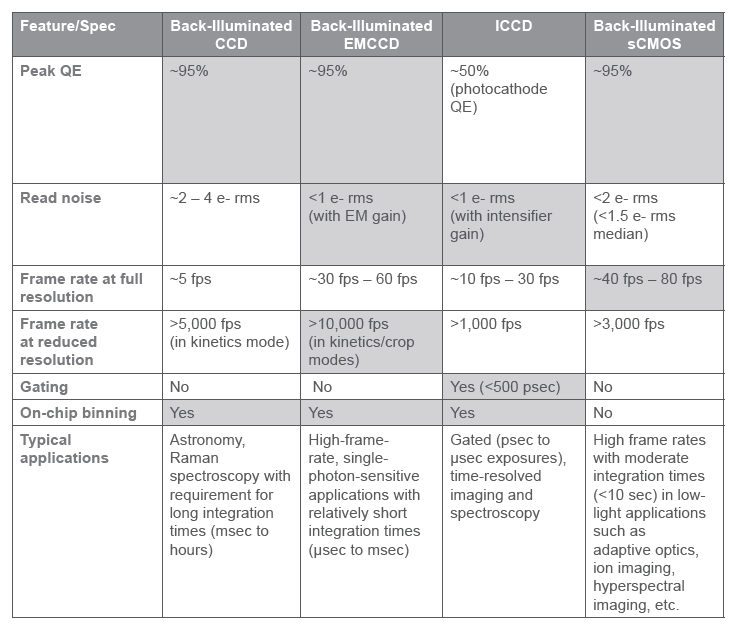 |
Scientific CMOS sensors typically do not support on-chip binning. However, the KURO camera’s low read noise and support of software binning (off-chip binning) make it ideal for high-speed spectroscopy applications. Furthermore, the pixel pitch of its sensor is a perfect match for optimal use with the award-winning, aberration-free IsoPlane® spectrometer from Princeton Instruments. | 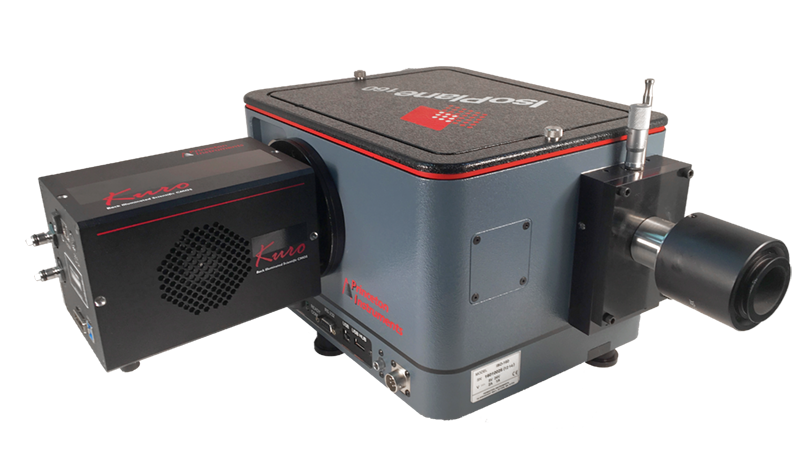 |
Designed for operation within the Princeton Instruments LightField software ecosystem, the KURO is easy to control and can be integrated quickly in myriad imaging and spectroscopy experiments. Camera integration for use with both MATLAB® (MathWorks) and LabVIEW® (National Instruments) is also fast and simple. | 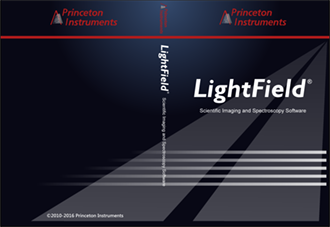 |
| Imaging Array | Sensor Type | Pixel Size | Peak QE | |
|---|---|---|---|---|
| KURO 1200B | 1200 x 1200 | Back-illuminated scientific CMOS | 11.0 x 11.0 µm | view QE data below |
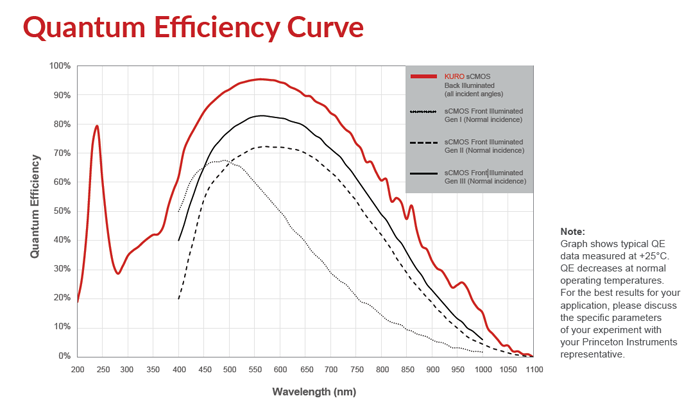
Fluorescence, Phosphorescence, and Photoluminescence Spectroscopy
Fluorescence, phosphorescence and photoluminescence occur when a sample is excited by absorbing photons and then emits them with a decay time that is characteristic of the sample environment.
Astronomical Imaging
Astronomical imaging can be broadly divided into two categories: (1) steady-state imaging, in which long exposures are required to capture ultra-low-light-level objects, and (2) time-resolved photometry, in which integration times range from milliseconds to a few seconds.
New Scientific CMOS Cameras with Back-Illuminated Technology
Aided by the latest CMOS fabrication technology, sCMOS devices can finally be created with a back-illuminated sensor architecture. As a result, sCMOS sensors are now capable of CCD-like quantum efficiency (>95%) and dynamic range without compromising the low read noise and high frame rates for which they are known.